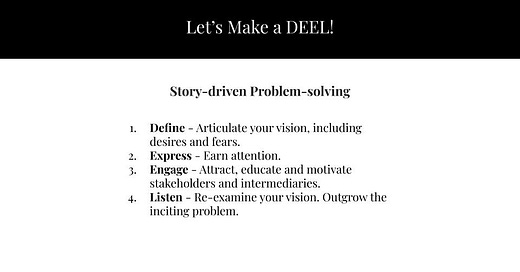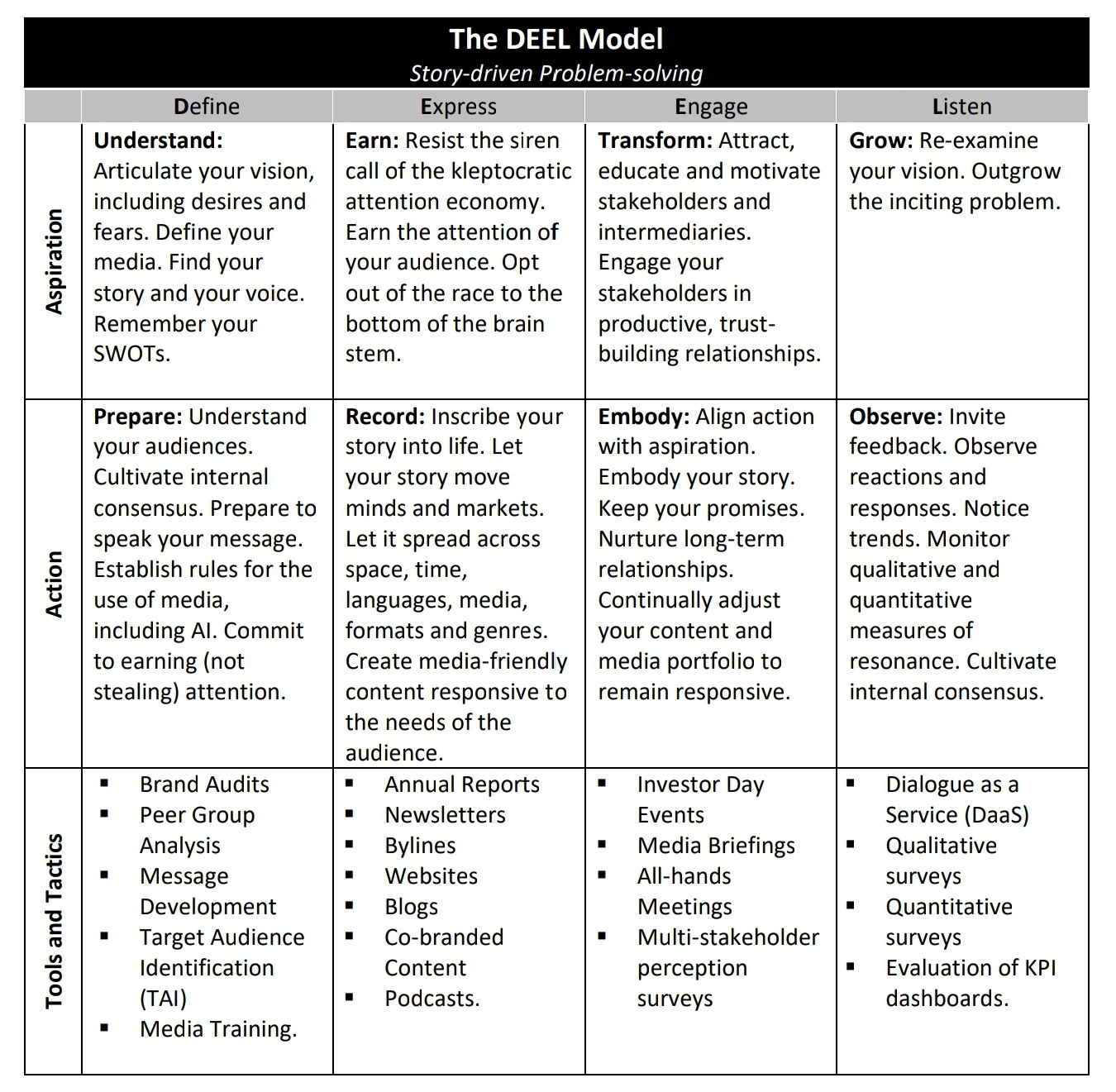There are many ways to think about individual and institutional responses to uncertainty. Soon after I returned to independent consulting nearly a decade ago, I started using the DEEL Model to market my services. Before I spell out the meaning of the DEEL, I urge you to consider the following perspectives that apply to all models of reality:
“All models are wrong, but some are useful.” — British statistician George E. P. Box, ‘Empirical Model-Building and Response Surfaces’ (1987)
“The artist picks up the message of cultural or technological challenge decades before its transforming impact occurs. He, then, builds models or Noah's arks for facing the change that is at hand.” — Media savant Marshall McLuhan, ‘Understanding Media: The Extensions of Man’ (1964)
“Truth is much too complicated to allow anything but approximations.”
— Attributed to Hungarian American mathematician, physicist, computer scientist and engineer John von Neumann (1903-1957)
“A map is not the territory it represents, but, if correct, it has a similar structure to the territory, which accounts for its usefulness.” — Independent scholar Alfred Korzybski ‘Science and Sanity: An Introduction to Non-Aristotelian Systems and General Semantics’ (1933)
The DEEL Model for Communications and Marketing
Let the quotes in the epigraph serve as fine print in lieu of a disquisition on the potential and pitfalls of models, systems, formulas, frameworks and methods. I am publishing this post for people to whom such an introduction would deliver nothing but old news.
My strong preference is to start client engagements without any preconceived models and to construct and update models as needed. However, for corporate leaders and communicators who want or need a starting point (“something to react to”), I offer the DEEL Model of story-driven problem-solving.
After 20 years of experience in PR agency and in-house roles, the DEEL framework gave me a way to organize and differentiate my services. The basic conviction at the heart of the model is that fruitful responses to problems:
Begin with understanding and description,
Reveal their worth in the crucible of relationships, and
Continually correct themselves through self-observation.
In other words, whatever the problem, we strive to understand whom we should reach, what we should say, and how best to observe the resonance of the message. Translating this conviction into corporate jargon, I think about problem-solving in terms of brand definition, brand expression, stakeholder engagement, and program evaluation.
Whether I use the DEEL Model or any other framework, what distinguishes my approach to marketing is my post-cynical stance on a question that, I believe, every marketer should ask and answer, but very few do. Here’s the question: In a kleptocratic attention economy, is there a viable non-kleptocratic approach to marketing and communication?
The easy and cynical answer is “no”. The more difficult post-cynical answer is that there's a narrow path. Through this blog, I am reaching out to business leaders, marketers and communicators drawn to this path. If that’s you, here’s the DEEL in a single table. The DEEL stands for: Define. Express. Engage. Listen.
Define
Aspiration: Understand. Articulate your vision, including desires and fears. Define your media. Find your story and your voice. Remember your SWOTs.
Action: Prepare. Understand your audiences. Cultivate internal consensus. Prepare to speak your message. Establish rules for the use of media, including AI. Commit to earning (not stealing) attention.1
Tools and Tactics: Brand Audits, Peer Group Analysis, Message Development, Target Audience Identification (TAI), Media Training.
Express
Aspiration: Earn. Resist the siren call of the kleptocratic attention economy. Earn the attention of your audience. Opt out of the race to the bottom of the brain stem.
Action: Record. Inscribe your story into life. Let your story move minds and markets. Let it spread across space, time, languages, media, formats and genres. Create media-friendly content responsive to the needs of the audience.
Tools & Tactics: Annual Reports, Newsletters, Bylines, Websites, Blogs, Co-branded Content, Podcasts.
Engage
Aspiration: Transform. Attract, educate and motivate stakeholders and intermediaries. Engage stakeholders in productive, trust-building relationships.
Action: Embody. Align action with aspiration. Embody your story. Keep your promises. Nurture long-term relationships. Continually adjust your content and media portfolio to remain responsive.
Tools & Tactics: Investor Day Events, Media Briefings, All-hands Meetings, Multi-stakeholder perception surveys.
Listen
Aspiration: Grow. Re-examine your vision. Outgrow the inciting problem.
Action: Observe. Invite feedback. Observe reactions and responses. Notice trends. Monitor qualitative and quantitative measures of resonance. Cultivate internal consensus.
Tools & Tactics: Dialogue as a Service (DaaS), Qualitative surveys, Quantitative surveys, Evaluation of KPI dashboards.
Are You Ready to Make a DEEL?
Already a Subscriber?
Let’s talk!
Related Readings
The DEEL Model is not a solution to kleptocracy, but it is the beginning of an anti-kleptocratic response. If this response resonates with you, here are some related materials:
When I write or talk about earned attention, I am not referring to the “E” in the PESO media model, which encompasses paid, earned, shared and owned media. In this framework, “earned” refers to media coverage generated through PR, which is a kleptocratic discipline.





